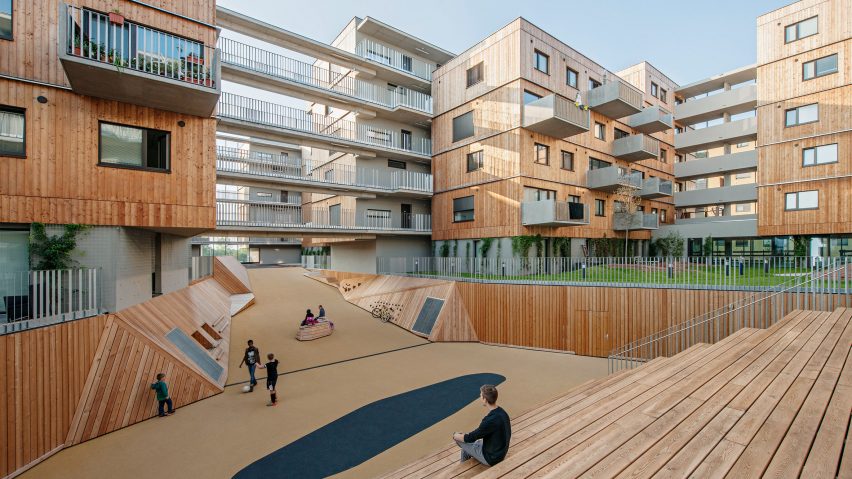
Seestadt Aspern Housing by Berger + Parkkinen brought Red Vienna into the 21st century
The first case study in our Social Housing Revival series looks at a housing block in Vienna organised around a central "common heart" that harks back to the city's golden age of municipal construction.
Designed by local practices Berger + Parkkinen and Querkraft Architekten, Seestadt Aspern Housing was completed in 2015 for housing cooperative EGB.
The block, known as D12, provides 213 apartments, eight shops and community facilities in Vienna's new district of Seestadt Aspern, one of Europe's largest urban development projects.
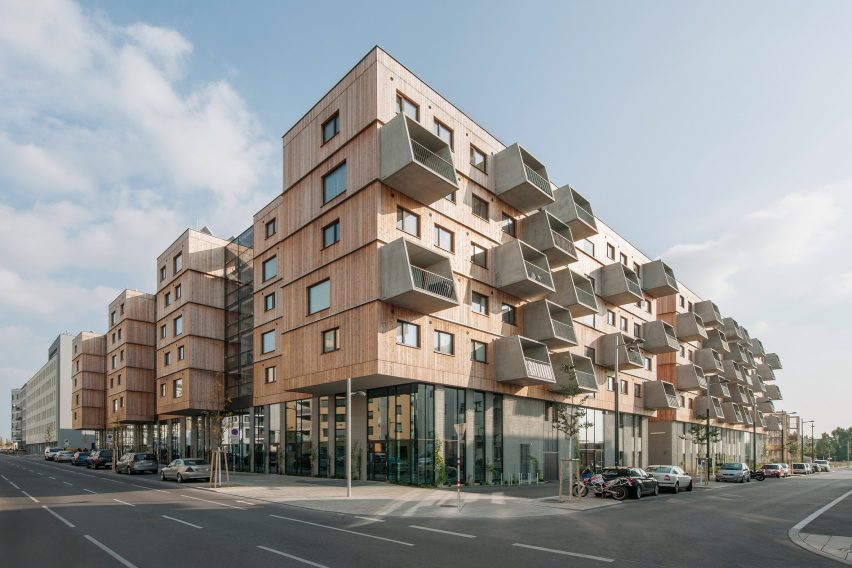
Due for completion in 2030, this new district will provide homes for 20,000 people and 20,000 workplaces, organised across 240 hectares around an artificial lake on the site of a former airfield.
Arranged in a series of timber-clad blocks with projecting concrete balconies around an internal courtyard, D12 was conceived by Berger + Parkkinen and Querkraft Architekten as a continuation and development of Vienna's rich social housing legacy.
Vienna's effective approach to social housing provision, often termed the Vienna Model, has long set it apart from any other city in the world, and has seen it named world's most liveable city by The Economist magazine several times.
A quarter of Vienna's residents are social tenants, and the majority of people in the city live in homes built on land that is publicly owned or owned by cooperatives to discourage speculation.
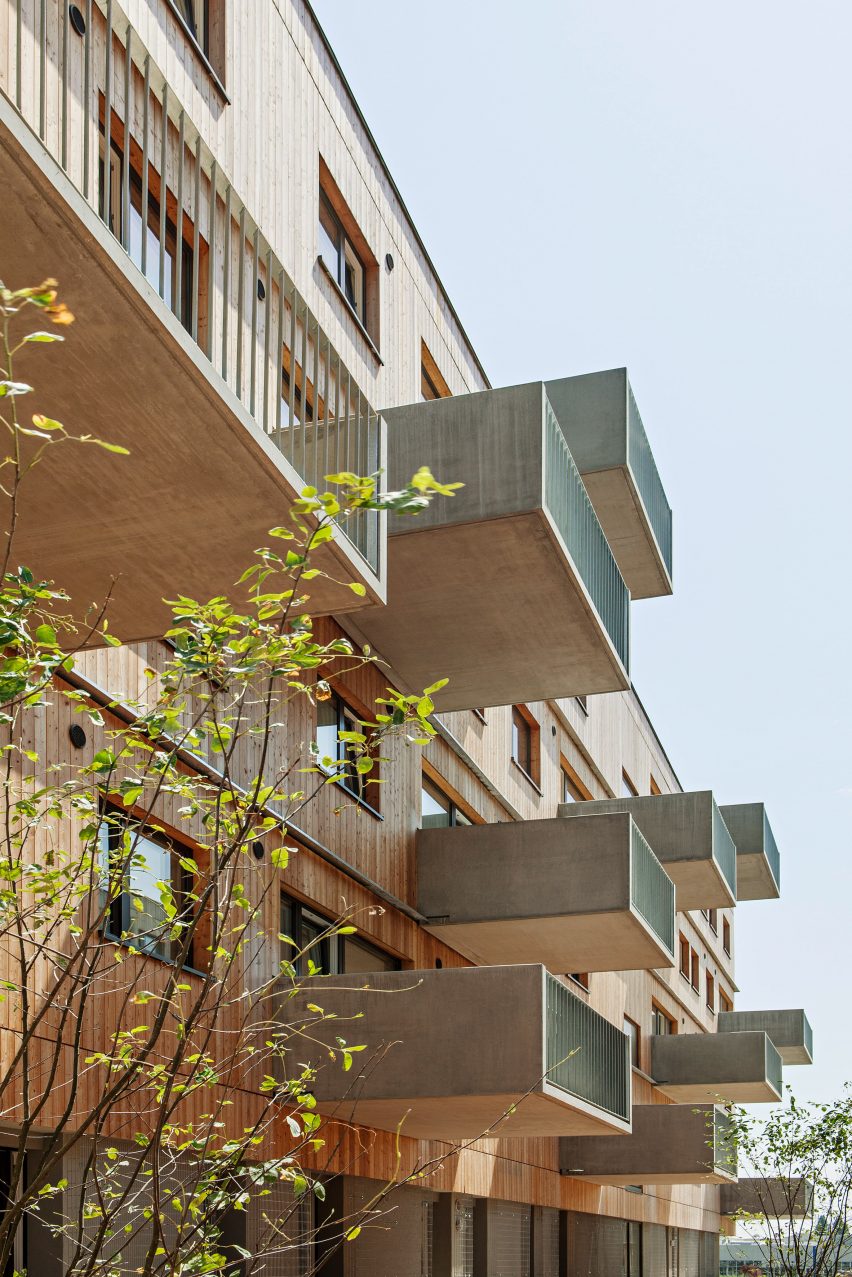
The beginnings of this housing model were during a period of socialist control between 1918 and 1934 known as "Red Vienna”, during which new taxation on luxuries was introduced to fund the construction of affordable public housing for workers.
The vast complexes built during this period, such as the iconic Karl Marx-Hof, were known as Gemeindebauten or "communal buildings" – a reflection of their role in providing not only housing but all of the facilities a community might need.
In Vienna, it is a legacy that looms large for those creating new social housing, and beyond it is often cited as a blueprint for how other European cities might tackle rapidly worsening crises in the provision of affordable and social housing.
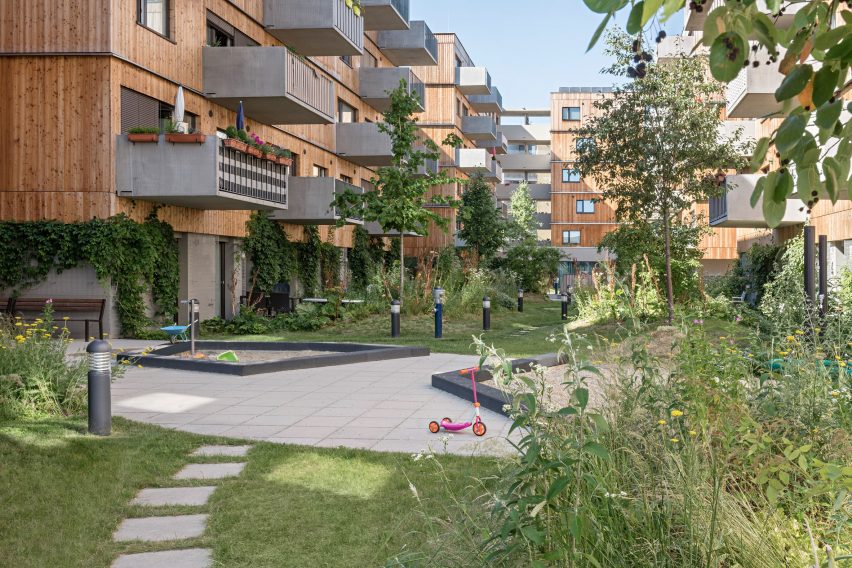
"The fascination of huge housing units, including all that is necessary for the community from small shops, childcare, spaces to meet and party up to cultural facilities, as built in the 1920s and 30s, is enormous," Berger + Parkkinen founder Alfred Berger told Dezeen.
"When designing a project like Seestadt Aspen D12 these are inspiring examples – to overcome the idea of procuring flats for people without setting up a wider frame, without thinking of how the building will perform in terms of social qualities," he continued.
In terms of their design, the developments of Red Vienna rejected the prevailing modernist penchant for isolated slab and point blocks, instead creating new street-fronts and public spaces that sought to integrate with the city's historic layout.
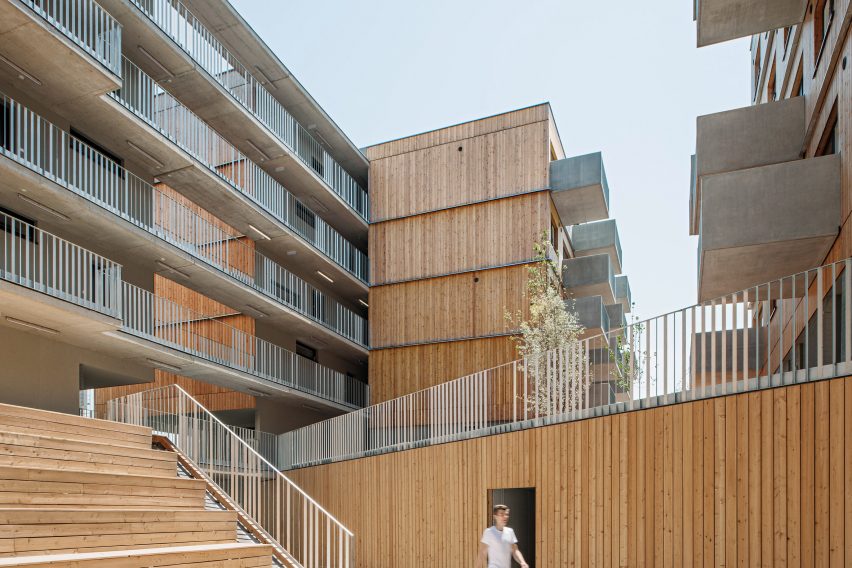
While the brownfield site of the Seestadt Aspen development has no immediate context on which to draw, it nonetheless demonstrates a continued interest in central Vienna's historic layout, in particular the courtyard typology.
At plot D12, this was a typology that Berger + Parkkinen and Querkraft Architekten wanted to develop, looking to further integrate the block with the surrounding streets.
Breaking the plan up into seven blocks arranged in parallel to one another, the complex encloses its central courtyard more loosely, offering a number of routes to and from the surrounding city and more gradual transitions between public and private spaces.
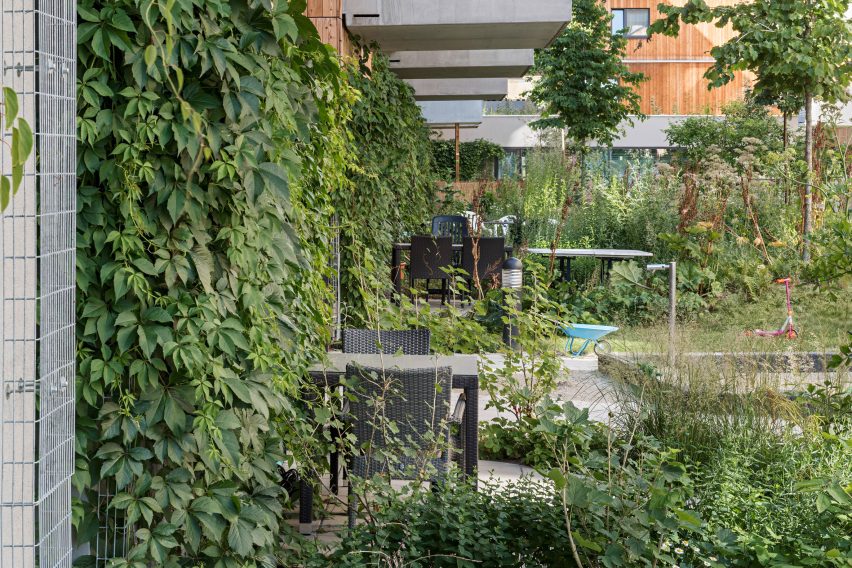
"The inner courtyards [of the Gemeindebauten] were certainly a strong image for our ambitions, but it needed more," Berger explained.
"It needed a complex interplay between private, semi-private and public areas, with intelligent positioning of common services like laundry rooms next to gymnastics and playrooms,” he added.
This central, semi-public courtyard – dubbed the "canyon" by the studio – provides a space for residents to "experience community", with meeting areas and play spaces for children overlooked by a stepped seating area and lined by sloping timber-clad walls.
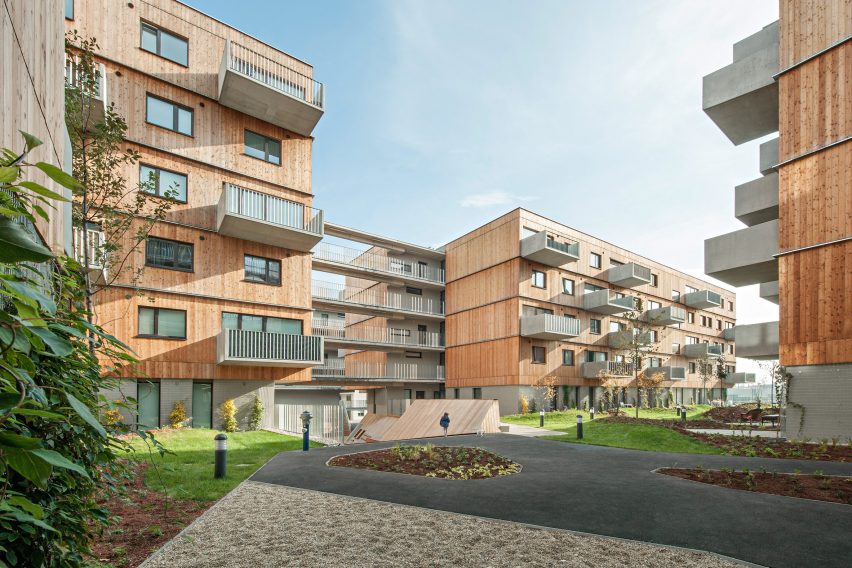
The complex is raised atop a basement car park and a ground-floor level of commercial and community spaces, finished with full-height windows to create a "shopfront" to the street and a concrete walls that are covered with metal mesh for growing plants.
A series of access routes combining staircases, internal "streets" and raised walkways stitch together each area of the complex, which aim to prevent the development of "corridor-like routes" and instead offer chances for interaction.
"To avoid monotony and anonymity, we decided to cut up the system into identifiable units with familiar dimensions, creating a sub cluster within the bigger cluster of the access decks," said Berger.
"The courtyard finally brings it all together. It serves as a transition between private, semiprivate and public space," he added.
Each block is constructed around a concrete frame, with highly-insulated external walls of prefabricated wood that are finished with larch planks.
The frame structure allows for greater freedom in the facades. Facing the street, extruded concrete forms create sheltered balconies, while facing the internal courtyard larger, open-topped balconies provide space for seating areas and growing plants.
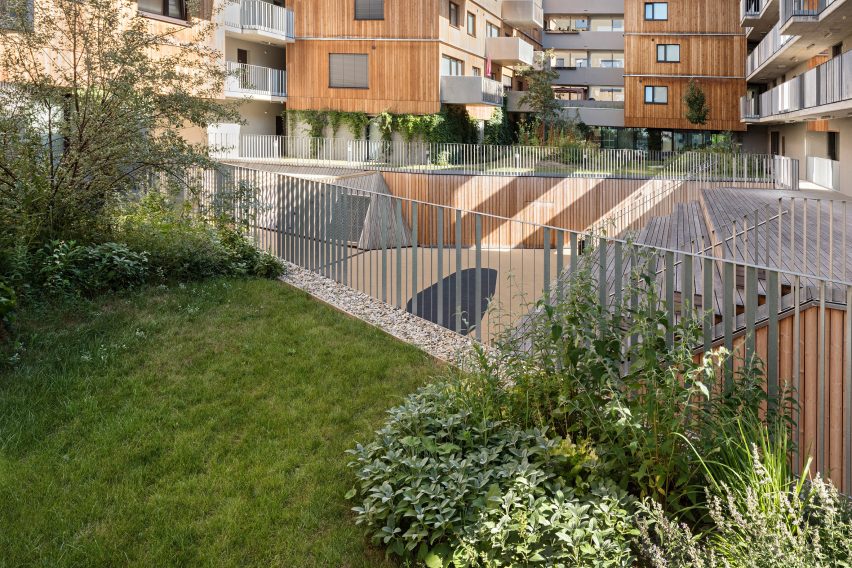
Inside, each of these blocks shares a linear arrangement of apartments around circulation cores, with a basic structure allowing for a high level of flexibility when laying out the apartments.
Part of this flexibility was about catering for a wide variety of residents and lifestyles rather than assuming that social housing is for a particular type of resident, as has always been a part of Vienna's approach.
"In our practice, we have been lucky to contribute housing projects on various social levels, like subsidised housing, non-subsidised middle-class housing, but also some luxury housing," said Berger.
"We think that working across social boundaries is helpful to develop architectural expression that avoids the trap of bold social coding, and rather seeks for a cultural link," he concluded.
The photography is by Herta Hurnhaus.
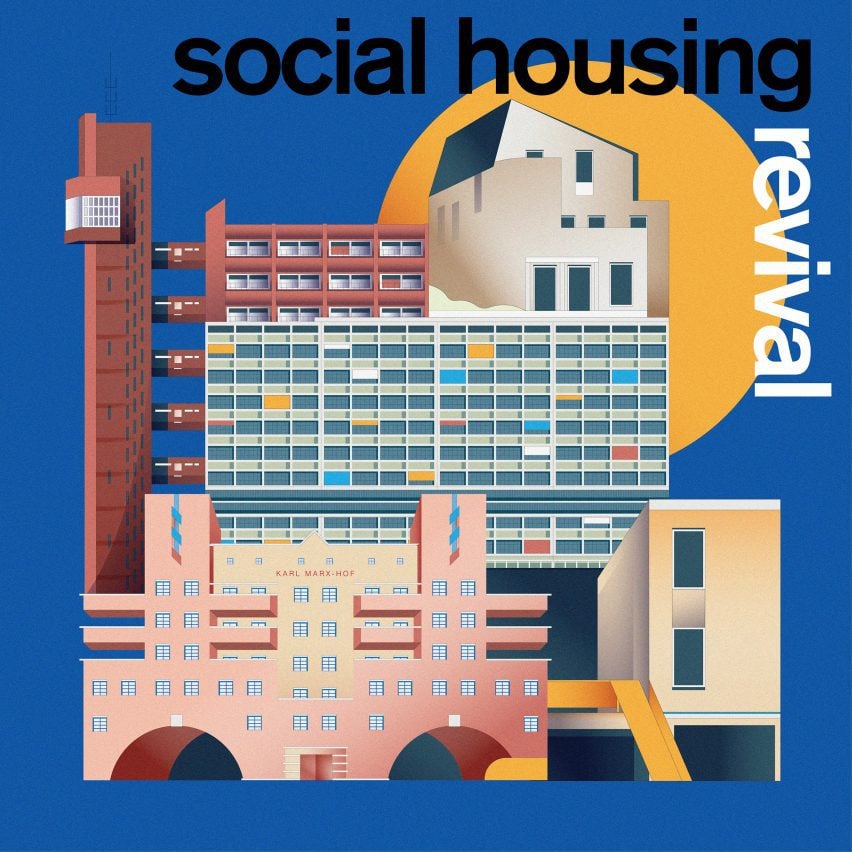
Social Housing Revival
This article is part of Dezeen's Social Housing Revival series exploring the new wave of quality social housing being built around the world, and asking whether a return to social house-building at scale can help solve affordability issues and homelessness in our major cities.